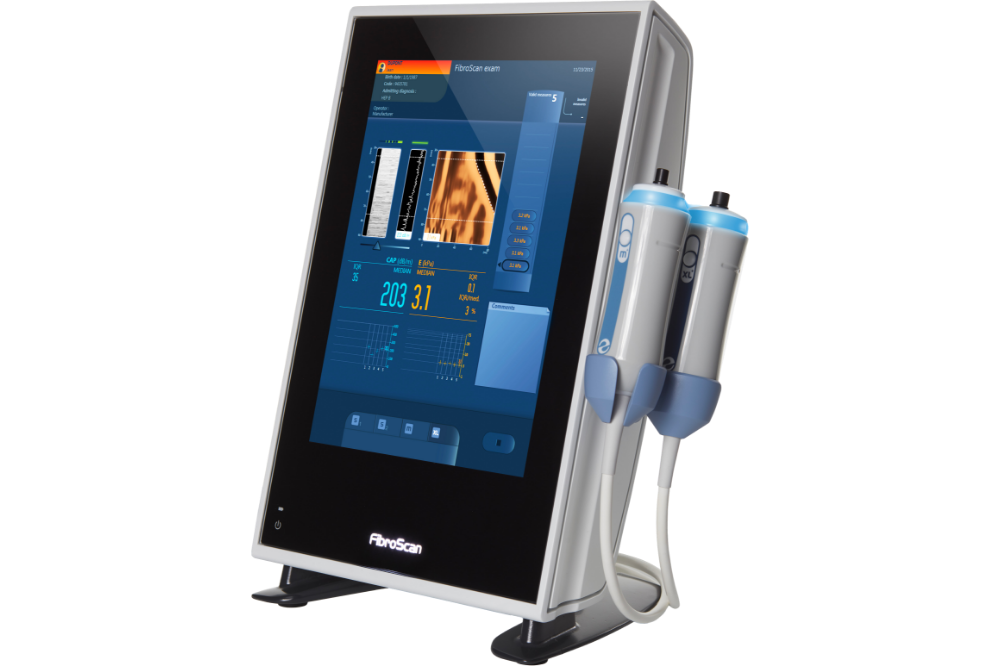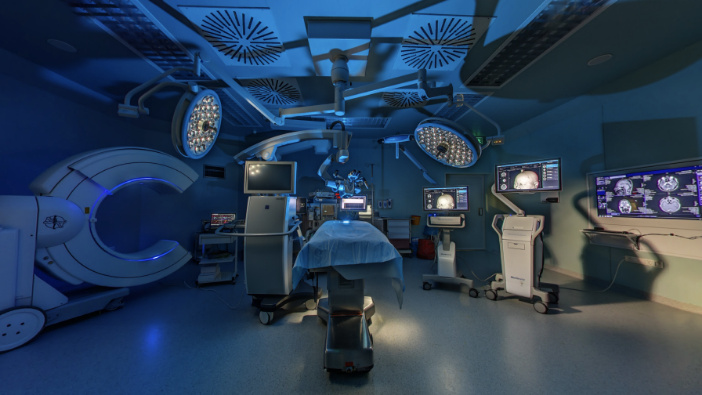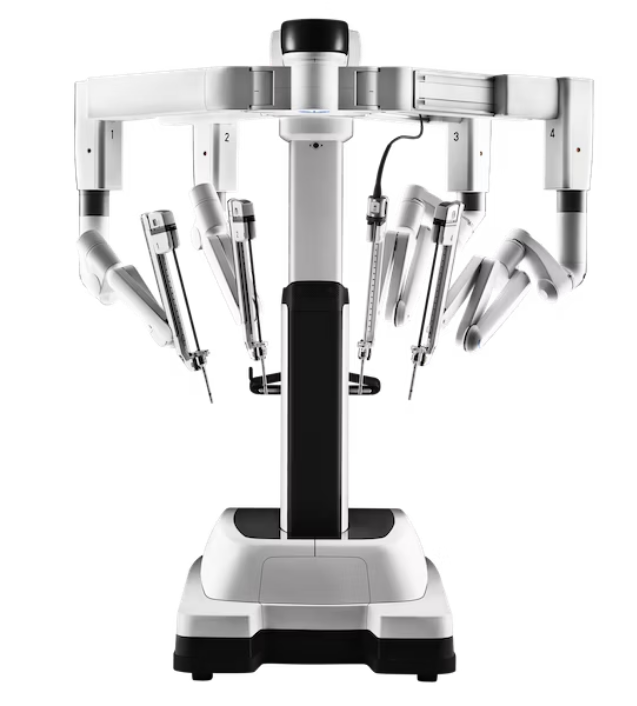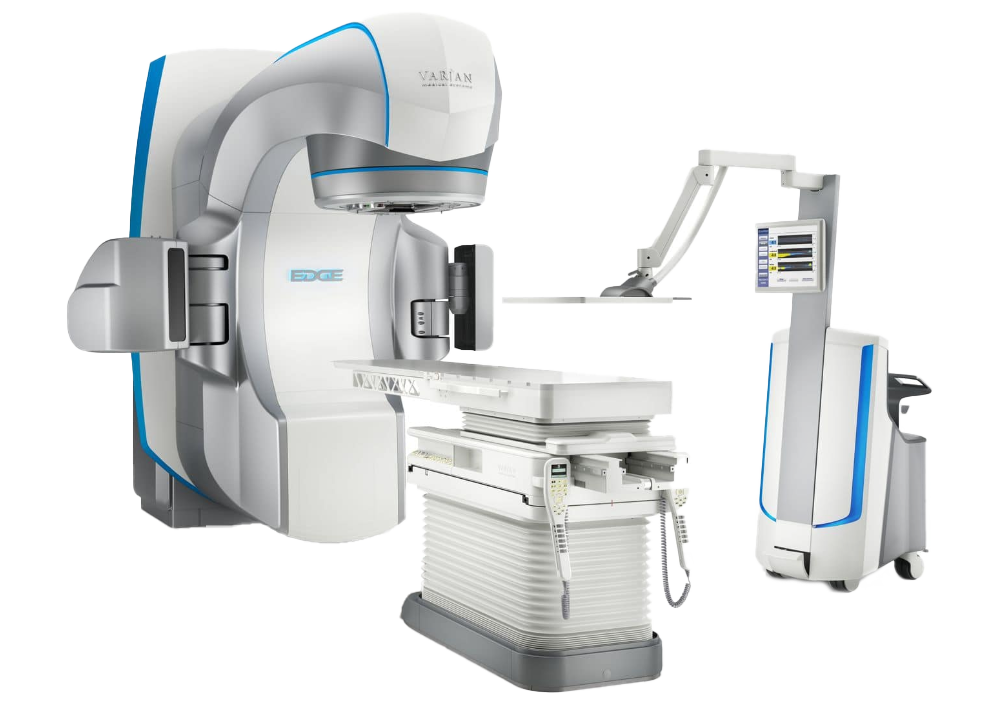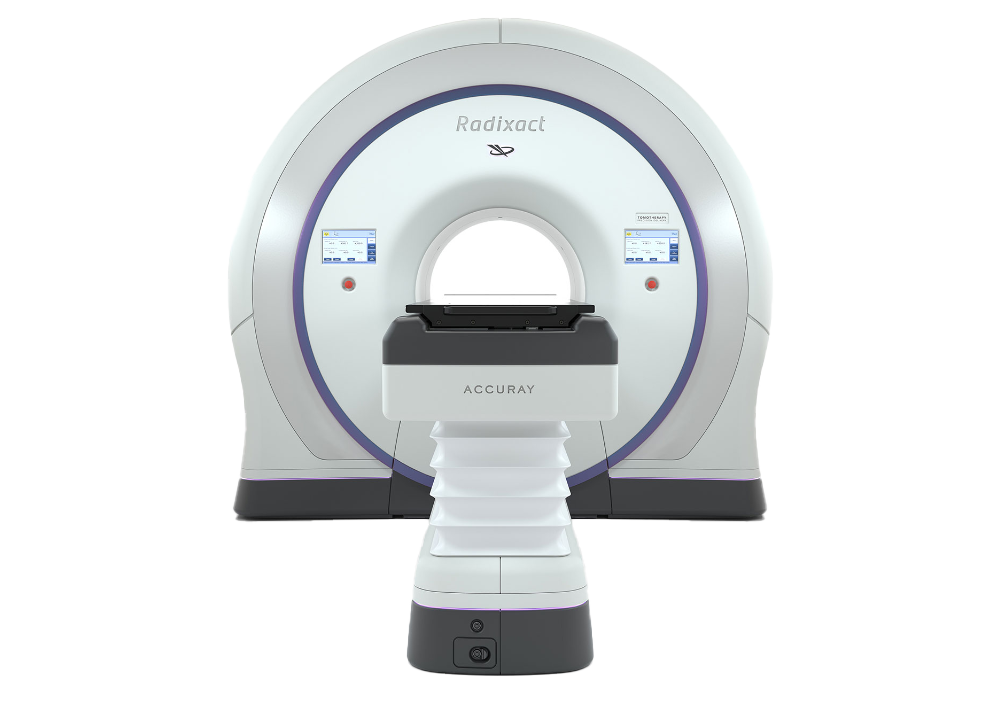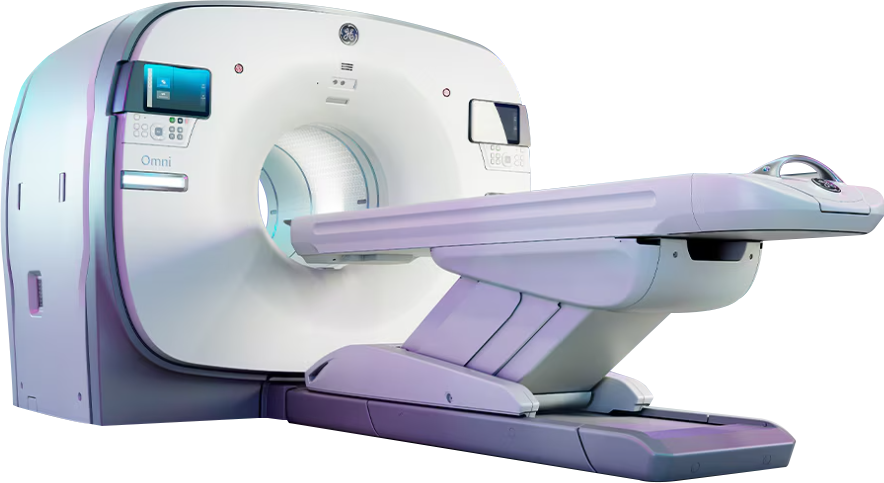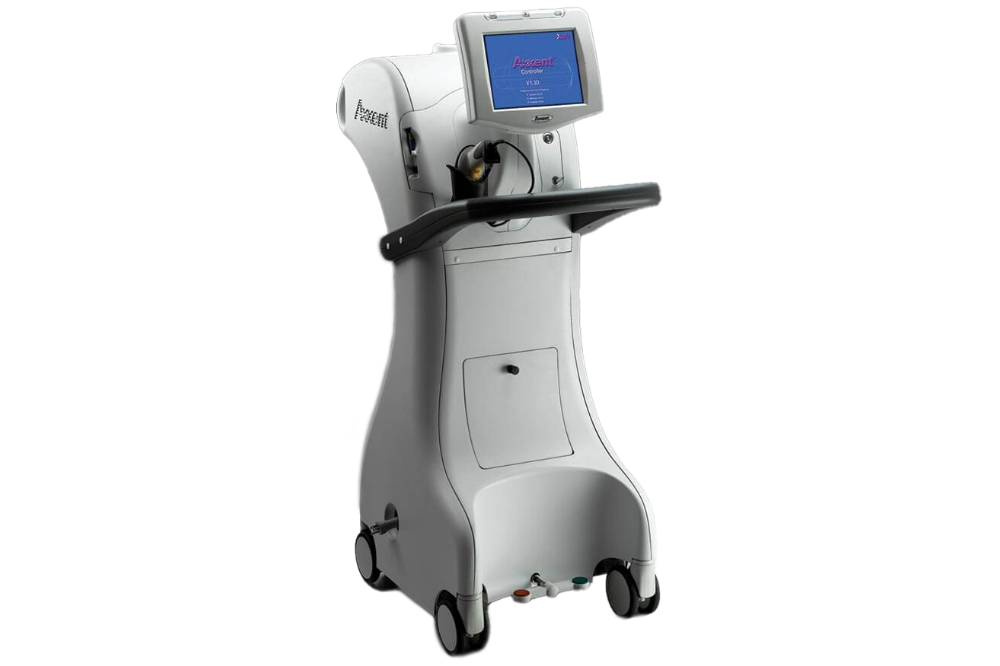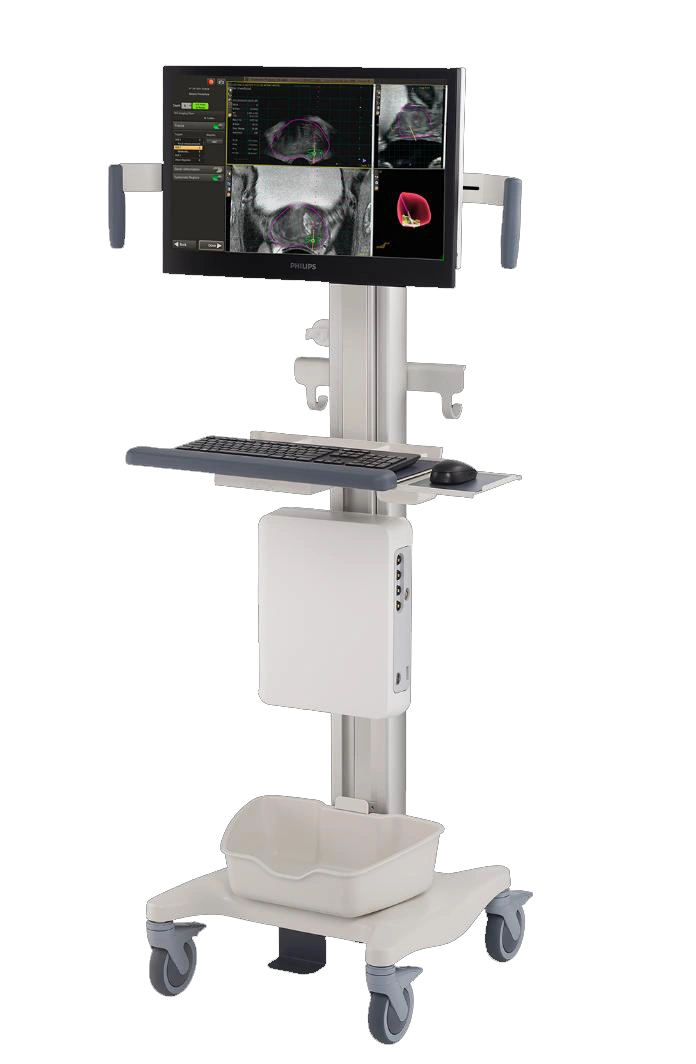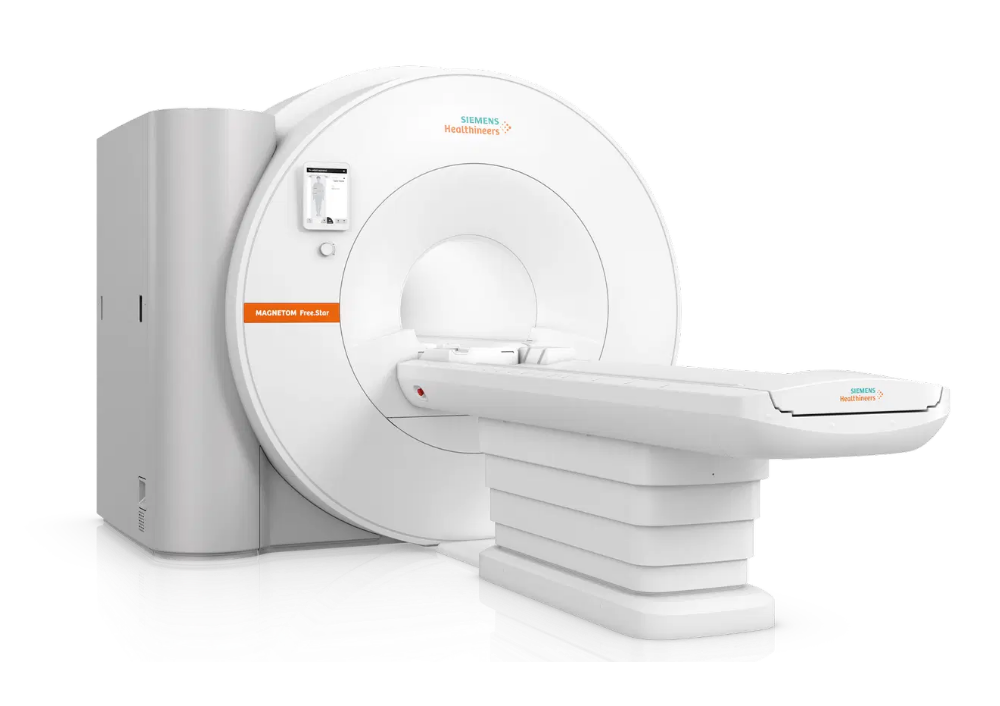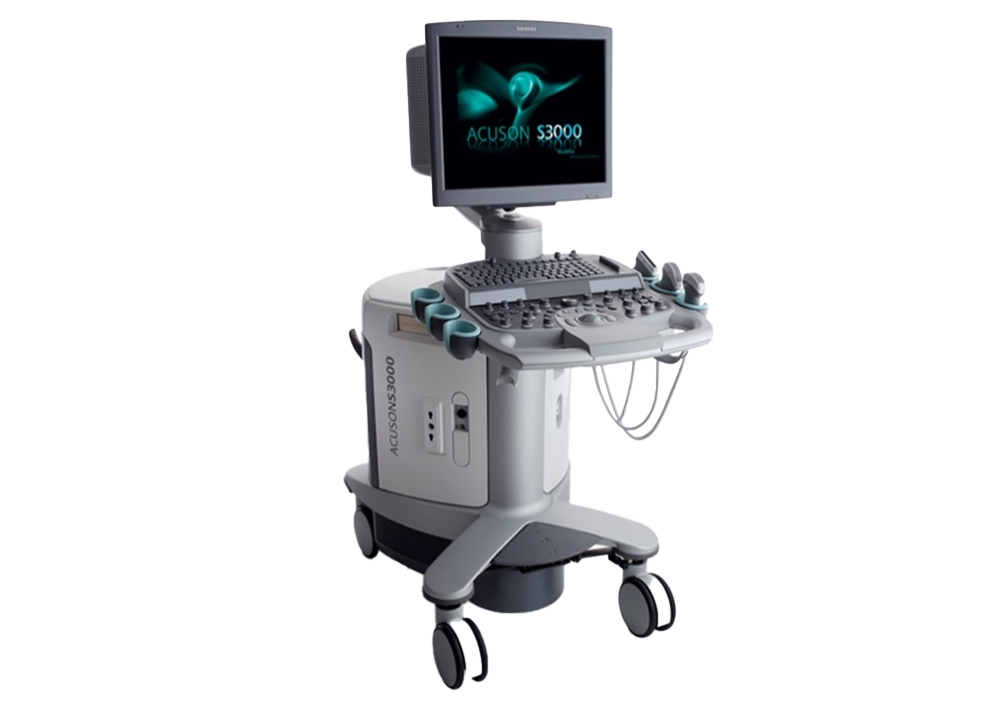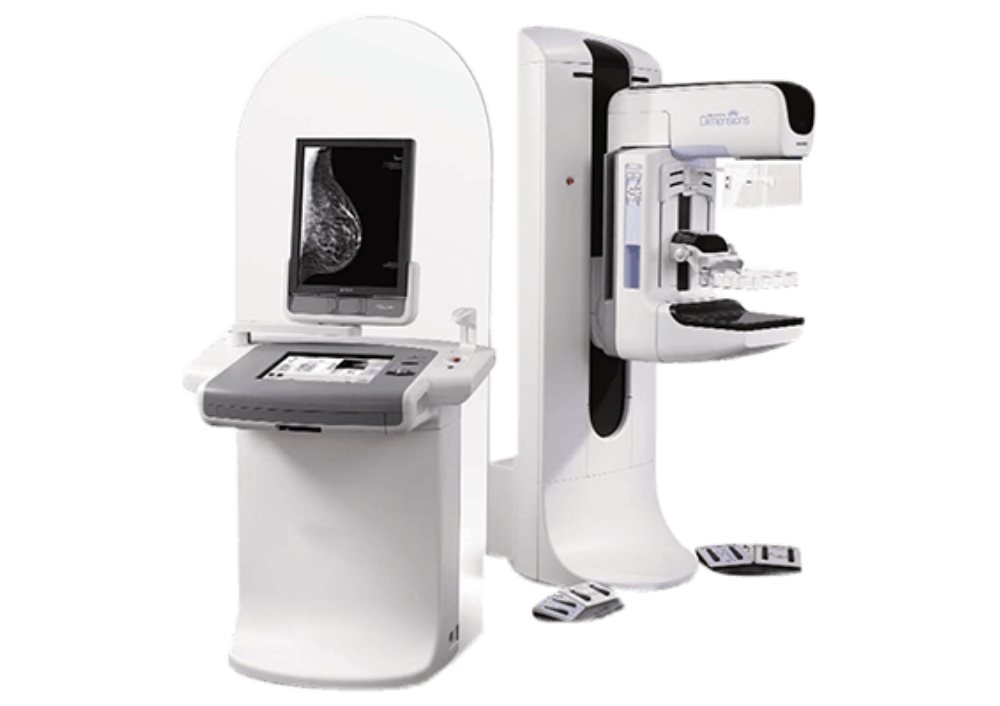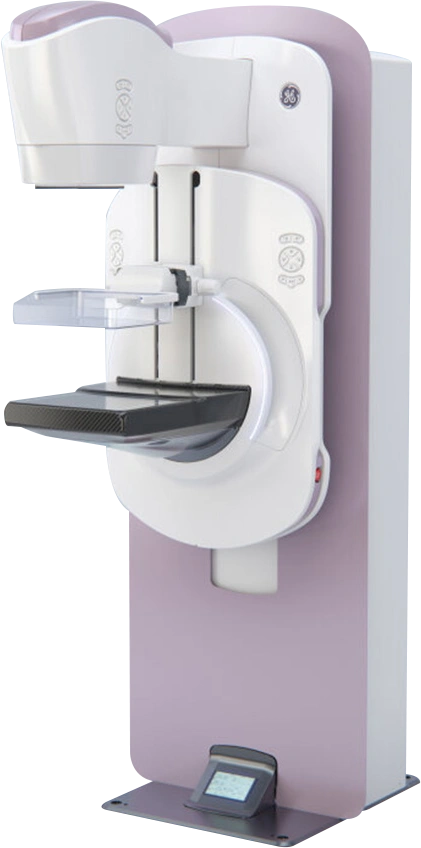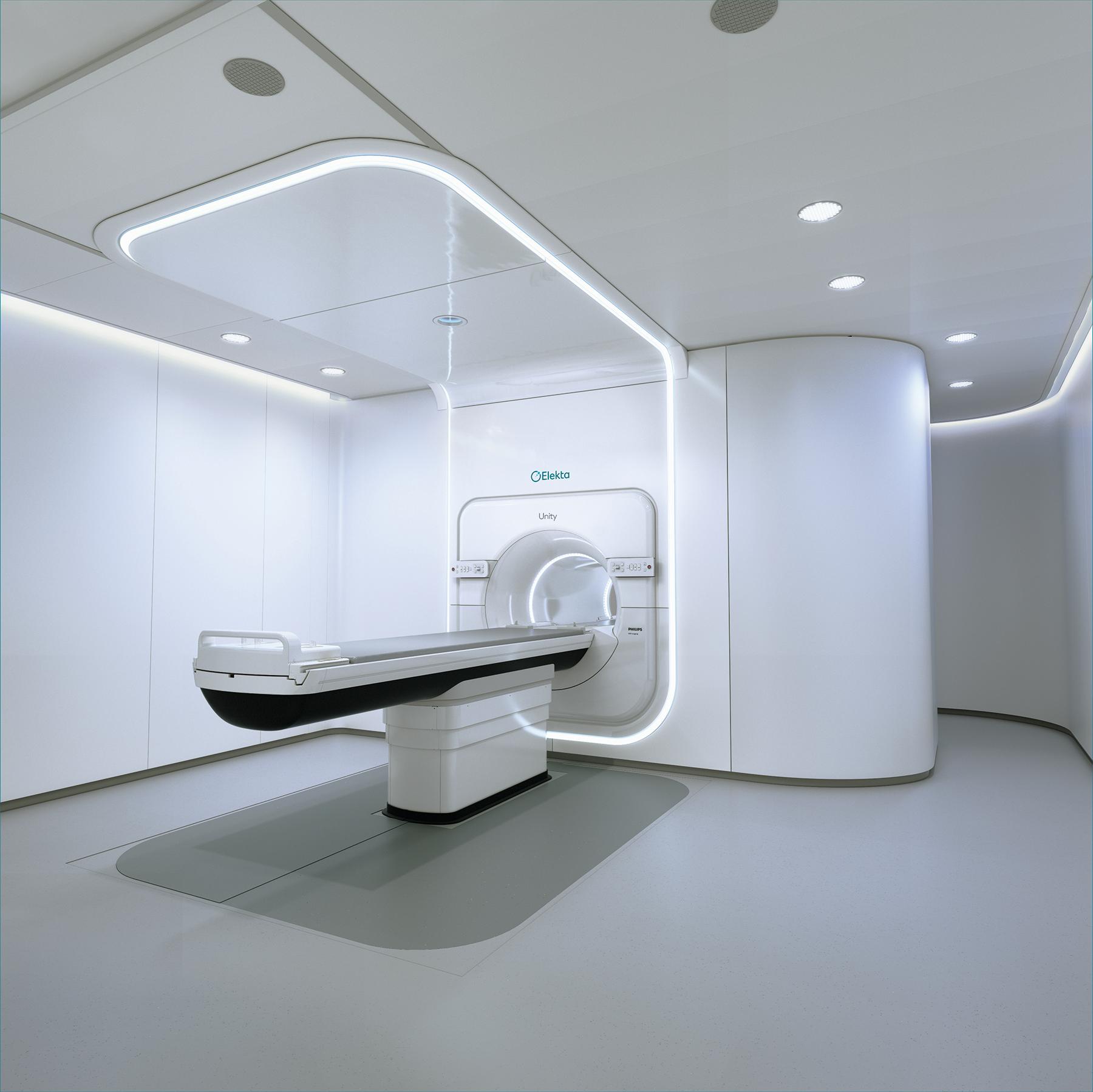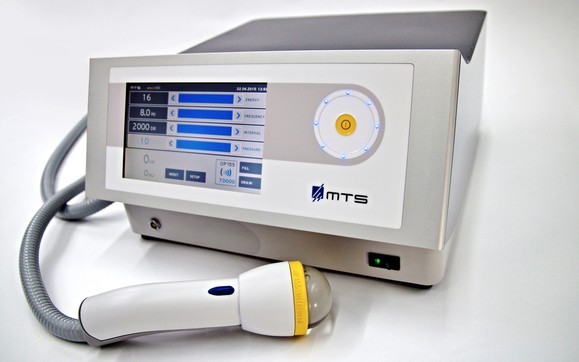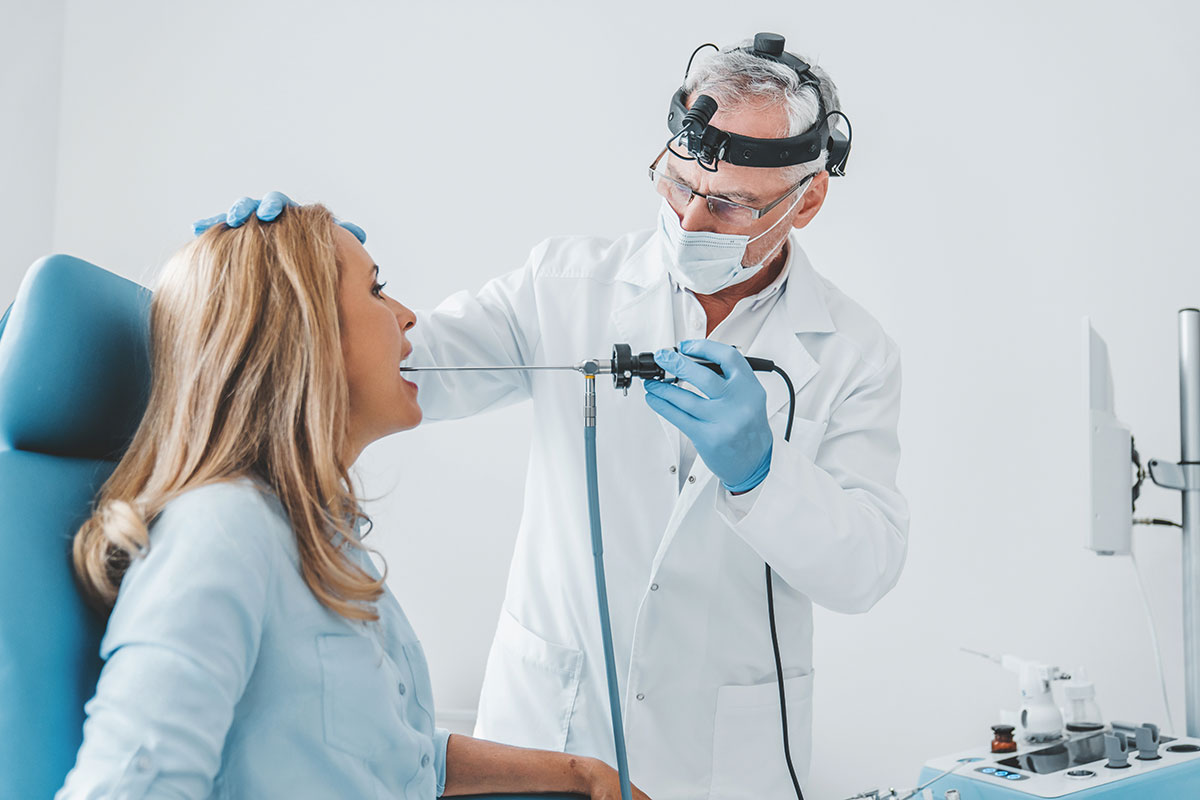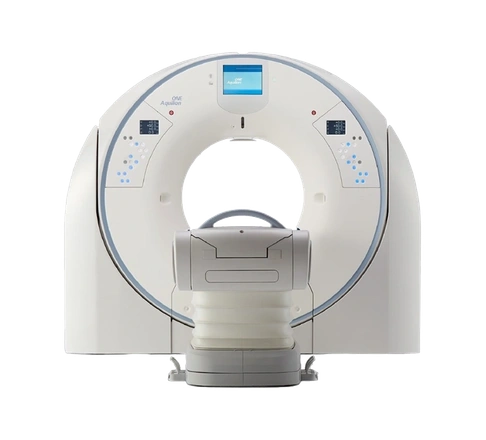CyberKnife M6
Precise Robotic Structure
The Cyberknife M6 treats tumors using highly precise robotic technology. With the linear accelerator placed on the robot, radiation is produced in varying field sizes according to the shape of the tumor. The robot has the ability to move along six different axes. This allows radiation to be delivered from multiple angles, ensuring optimal dose distribution, especially for tumors near critical organs, thanks to the robotic arm.
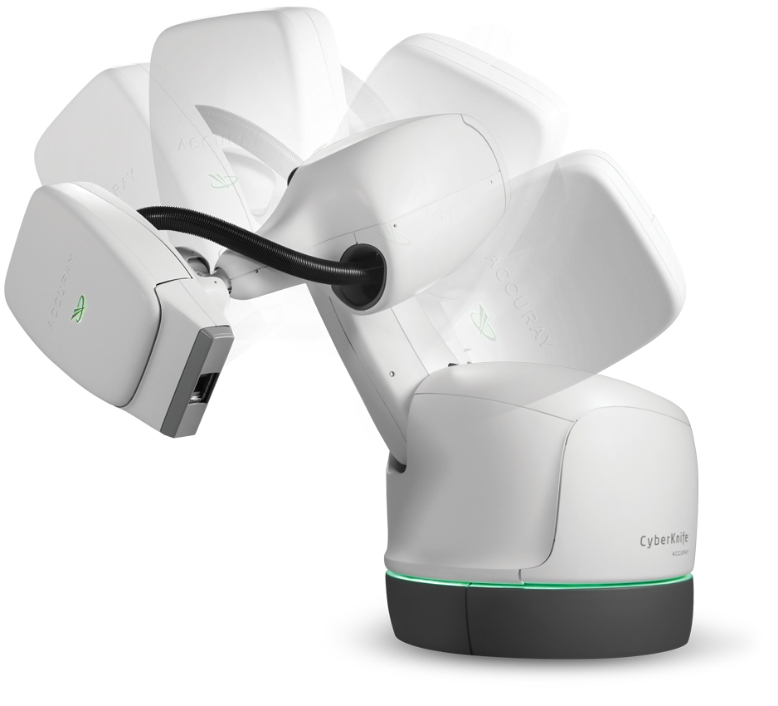
Image-Guided Therapy
In radiosurgery, it is crucial to identify the lesion and its location before and during the treatment. Radiosurgical procedures conducted without precisely determining the location of the lesion can lead to dangerous outcomes. In the Cyberknife M6 system, image tracking is performed with computer assistance to precisely deliver radiation to the desired area of the patient. During the treatment, even the smallest patient movements that could reduce the accuracy of the current session are detected by the system and corrected. Therefore, especially in cranial applications, rigid frame systems are unnecessary, and patients can be comfortably treated with simple plastic mask setups.
Respiratory Monitoring
One of the most important features of the Cyberknife M6 system is its ability to monitor respiration. Tumors located in the thoracic and abdominal regions (e.g., lungs, liver, pancreas, adrenal glands, etc.) move with respiration. It is difficult to irradiate moving lesions. Therefore, special techniques are required to monitor movement during treatment. Conventional devices use rigid fixation tools and create large-margin treatment areas to account for movement-related displacement. In some cases, patients are asked to hold their breath to immobilize the tumor, but this can compromise patient comfort.
The Cyberknife M6 treatment device does not require any of these methods. Using a special apparatus placed on the patient's chest and an infrared camera, the external chest movement of the patient can be monitored and correlated with internal tumor movement. This allows the robot to track the tumor during treatment, or in other words, the robot can synchronize with the patient's breathing, breathing in and out together with the patient.



